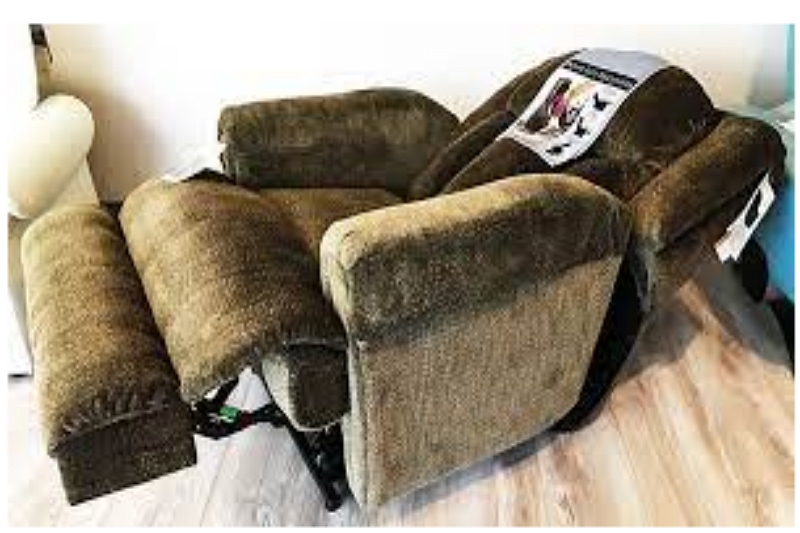Does your cat constantly get on the recliner? If you have a catnapper recliner and are looking for how to clean it, then this is the article for you.
We’ll go over how to remove stains from the fabric, how to deep-clean the frame, and how to maintain it in between. There are also some helpful tips that will make cleaning a catnapper recliners!

Steps on Cleaning a Catnapper Recliner
There are a few basic steps you can take to give your catnapper recliner a good cleaning, but we’re going to focus on how to clean the fabric and how to remove stains from upholstery.
Step 1. The first thing you want to do when it comes time for deep cleaning is vacuum all loose debris off of the recliner. You can use a vacuum cleaner with an upholstery attachment to get into all of those tight spaces if you need to.
Step 2. After vacuuming, it’s time for spot cleaning and removing stains from your catnapper recliner. This is how you remove tough spills and grime that won’t wipe off with just washing.
Step 3. So how do you know where stains are? You can use a black light to spot urine and other things that may be difficult to see with the naked eye. A UV pet safe flashlight will help too, but it’s best for smaller areas because they have less power than black lights. Be sure not to point the lights directly into the fabric as that can cause permanent damage.
Step 4. You will want to start by using a soft brush or cloth, dish soap, and water if you have access to it. If not, there are other options for how to clean catnapper recliners without much in the way of tools available. You could try applying rubbing eder oil to the entire chair and then wiping it off with a cloth.
You can also use alcohol or vinegar in place of dish soap, but make sure you agitate before applying because these are not cleaners themselves.
Step 5. After you’re done cleaning catnapper recliners, be sure to remove all furniture protectors like blankets or sheets before you’re done. Don’t forget to vacuum the area where the chair has been sitting as well in order to remove any dirt or hair that might have accumulated during use.
If your recliner is stained, try using a lint roller on it and then wiping off with a damp cloth afterwards if you want how to clean catnapper recliner
Note
#1. If you’re not sure how to clean catnapper recliners, we recommend using the same procedure as when cleaning upholstery. All of these methods will require a vacuum cleaner in order to get rid of any mess afterwards. You might also need a rug or furniture protector if there is some kind of spill on the carpet, how to clean catnapper recliner
#2. If you have a hard time getting how to clean catnapper recliners upholstery dry after cleaning it or if there is any kind of residue leftover, simply use some rubbing alcohol in order to get rid of these stains. The same goes for the wooden parts and fabric covering how to clean catnapper recliner
#3. Do not forget how important it is how to clean catnapper recliners that you spot treat any stains as soon as possible before they have a chance to set in.
#4. This means using water and soap or an upholstery cleaner if it’s only the fabric covering how to clean catnapper recliner but if you how to clean catnapper recliners have stains on the wooden parts as well, then use a mixture of dish soap and water.
Features of a Catnapper Recliner
#1. A catnapper recliner is a type of sofa that has two separate seats with the back being hinged to fold down and meet them. They are usually rectangular in shape but can also be L-shaped, U-shaped, or even circular. The fabric on the seat often consists of mesh filling which allows for airflow and comfort .
#2. The frame of a catnapper recliner is made up of wood and metal. They’re very heavy so it’s important to have two people when moving or repairing them. If you need to move your catnapper recliner, make sure that the back is folded down first because if you don’t, there will be a gap on the back of the sofa.
#3. The average catnapper recliner can take up to 150 pounds, but it’s important not to exceed that weight because overloading will damage how well your catnapper recliner functions. If you’re looking for a more durable fabric option or have kids who are prone to spills and accidents, then you may want to consider a synthetic fabric like polyester or olefin.
#4. Catnapper recliners are more expensive than other types of sofas because they’re made with quality materials and have more features than most people will use (i.e., the ability to lay back as opposed to just sitting).
